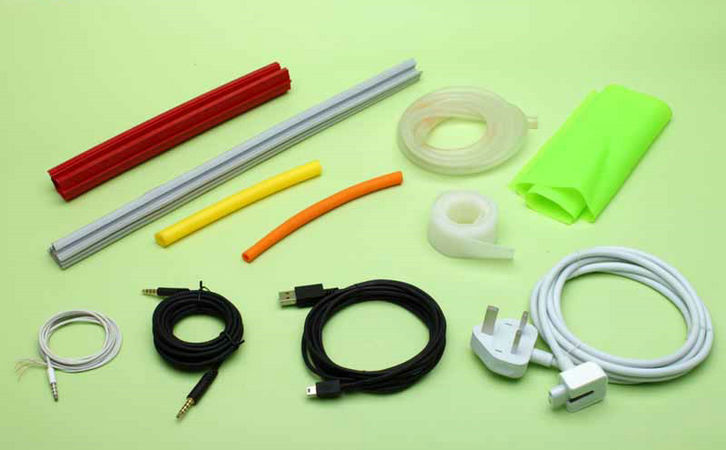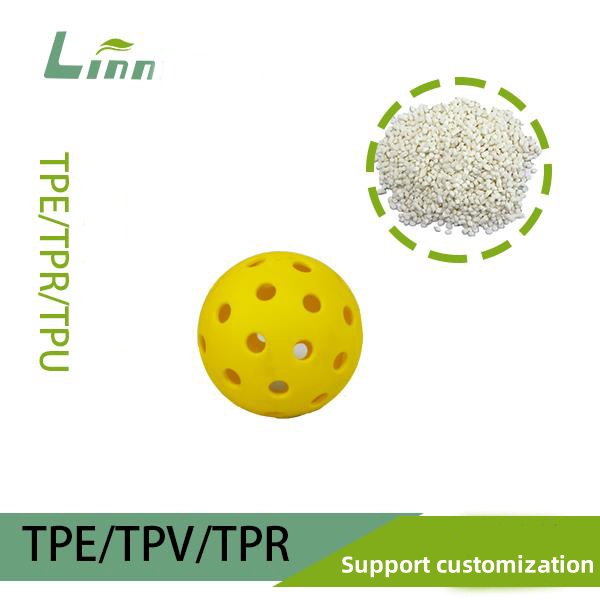A while back, I was at a trade show chatting with a product designer who was brainstorming ways to create a durable yet comfortable tool handle. He wanted to overmold a soft, grippy material onto a rigid base to improve user experience without breaking the bank. When he mentioned combining TPR and PP, I could see the excitement in his eyes—but also the uncertainty. Could these two materials bond effectively? Would the process be cost-efficient? Those questions stuck with me, and they’re what inspired this deep dive into overmolding TPR onto PP. Let’s unpack this topic step by step, blending science, practical know-how, and a few lessons I’ve learned along the way.

What Is Overmolding, and Why TPR and PP?
Before we get into the nitty-gritty, let’s clarify what overmolding is. Overmolding is a manufacturing process where one material (typically a soft or flexible one) is molded over a second, usually rigid, material to create a single part with combined properties. Think of a toothbrush with a hard plastic body and a soft rubber grip—that’s overmolding in action.
TPR (Thermoplastic Rubber): TPR is a flexible, rubber-like material that’s easy to mold and offers excellent grip, elasticity, and shock absorption. It’s a go-to for soft-touch surfaces in products like shoe soles, tool handles, and medical devices.
PP (Polypropylene): PP is a rigid, lightweight, and chemical-resistant thermoplastic commonly used for structural components like casings, containers, and automotive parts.
The idea of overmolding TPR onto PP is appealing because it combines TPR’s soft, user-friendly texture with PP’s strength and affordability. But the question is: can they bond effectively, and what does it take to make it happen?
Why Consider Overmolding TPR onto PP?
In my years working with manufacturers, I’ve seen TPR and PP paired in overmolding for several reasons:
Enhanced Comfort: TPR’s soft, grippy surface improves the feel of products like tool handles or wearable devices.
Cost Efficiency: PP is inexpensive and widely available, making it a cost-effective base material.
Durability: PP’s rigidity provides structural support, while TPR adds flexibility and impact resistance.
Aesthetics: Overmolding allows for sleek, multi-material designs that look and feel premium.
But here’s the catch: TPR and PP don’t naturally bond well due to their differing chemical and physical properties. Let’s explore why and how to overcome this.
The Science Behind Overmolding TPR and PP
1. Chemical Compatibility
TPR and PP are chemically dissimilar. TPR, often based on styrene-butadiene-styrene (SBS) or styrene-ethylene-butylene-styrene (SEBS), is an elastomeric material with a polar nature. PP, a non-polar, semi-crystalline polymer, resists bonding with TPR. Without proper intervention, overmolding TPR onto PP can result in poor adhesion, leading to delamination (where the layers peel apart).
I once worked with a factory that tried overmolding TPR onto PP without any preparation. The TPR layer peeled off after minimal use, costing them a batch of defective products. This experience underscored the need for strategies to improve bonding.

2. Mechanical Bonding
Even if chemical bonding is weak, mechanical interlocking can help. By designing the PP substrate with features like grooves, undercuts, or textured surfaces, you can create physical anchors for the TPR to grip onto during molding. I’ve seen this approach work wonders in applications like tool grips, where the TPR locks into the PP’s surface, enhancing bond strength.
3. Processing Conditions
Overmolding requires precise control over temperature, pressure, and injection timing. TPR typically melts at 160-200°C, while PP melts at 160-240°C. These overlapping ranges make overmolding feasible, but the PP substrate must be molded first and cooled slightly before injecting TPR to avoid warping or melting the PP.
In one project, I helped a team fine-tune their injection molding machine to overmold TPR at 180°C onto a PP substrate pre-molded at 220°C. The result was a strong bond with no distortion, proving that process optimization is critical.
Strategies to Successfully Overmold TPR onto PP
Based on my experience, here are the key strategies to make TPR and PP overmolding work:
1. Use a Compatibilizer or Adhesive Promoter
To improve chemical bonding, you can use a compatibilizer like maleic anhydride-grafted polypropylene (PP-g-MAH), which modifies the PP surface to bond better with TPR. Alternatively, applying a primer or adhesive promoter to the PP substrate before overmolding can enhance adhesion. I’ve seen primers increase bond strength by up to 30% in lab tests.
2. Design for Mechanical Interlocking
Incorporate textured surfaces, undercuts, or holes in the PP substrate to create mechanical anchors for the TPR. For example, a tool handle I worked on had small ridges molded into the PP core, allowing the TPR to grip tightly and resist peeling.
3. Optimize Molding Parameters
Use a two-shot injection molding machine or a multi-material mold for precise control. Ensure the PP substrate is molded first, cooled to a stable temperature (around 50-80°C), and then overmolded with TPR at 170-190°C. This prevents the PP from deforming while ensuring a good bond.
4. Select the Right TPR Grade
Not all TPRs are created equal. Choose a TPR grade with a high SEBS content or one specifically formulated for overmolding onto PP. Suppliers often provide grades designed for PP compatibility, which can make a big difference.
5. Test Bond Strength
Before mass production, conduct peel tests or tensile tests to measure the bond strength between TPR and PP. In one case, I helped a client avoid a costly recall by identifying weak adhesion during pre-production testing.

Applications of TPR-PP Overmolding
Overmolding TPR onto PP is used in various industries. Here are some examples I’ve encountered:
Tool Handles: TPR provides a soft, non-slip grip over a rigid PP core, improving ergonomics.
Medical Devices: TPR overmolded onto PP creates comfortable, grippy surfaces for devices like syringes or handheld monitors.
Consumer Electronics: TPR-PP overmolding is used in phone cases or remote controls for a premium feel.
Automotive Components: Interior parts like gearshift grips often use TPR over PP for durability and comfort.
Comparison of Overmolding Materials
To put TPR and PP in context, here’s a table comparing them with other common overmolding combinations:
|
Material Combo |
Bond Strength |
Key Benefits |
Common Applications |
|---|---|---|---|
|
TPR on PP |
Moderate (with compatibilizer) |
Cost-effective, flexible yet rigid |
Tool handles, phone cases |
|
TPR on ABS |
High |
Strong adhesion, durable |
Electronics, medical devices |
|
TPU on PC |
High |
Excellent toughness, clarity |
Wearables, automotive parts |
|
Silicone on PP |
Low to Moderate |
Soft feel, heat resistance |
Kitchenware, medical grips |
This table shows that TPR on PP is a cost-effective option but requires extra steps to achieve strong bonding compared to combinations like TPR on ABS.
Challenges and How to Overcome Them
Overmolding TPR onto PP isn’t without its hurdles. Here’s what I’ve seen go wrong and how to fix it:
1. Poor Adhesion
Without a compatibilizer or mechanical interlocking, the TPR can peel off the PP. Solution: Use PP-g-MAH or a primer, and design the PP substrate with textured surfaces or undercuts.
2. Warping or Deformation
If the PP substrate is too hot or too cold during overmolding, it can warp or fail to bond. Solution: Cool the PP to 50-80°C before injecting TPR, and use precise temperature control.
3. Cost Considerations
Compatibilizers, primers, and multi-shot molding machines can increase costs. Solution: Start with small-scale trials to optimize the process and justify the investment with improved product quality.
4. Material Variability
Recycled PP or inconsistent TPR grades can lead to unpredictable bonding. Solution: Source high-quality, consistent materials and verify compatibility through testing.
Industry Trends and Insights
The demand for overmolded products is growing, driven by consumer demand for ergonomic, multi-material designs. According to MarketsandMarkets, the global injection molding market, which includes overmolding, is projected to reach $305 billion by 2028. TPR-PP overmolding is particularly popular in cost-sensitive industries like consumer goods and footwear.
I’ve also noticed a push toward sustainable overmolding, with manufacturers experimenting with recycled PP and bio-based TPRs. The Ellen MacArthur Foundation highlights the importance of circular economy practices in plastics, and TPR-PP overmolding can align with these goals if recycled materials are used carefully.

My Personal Experience with TPR-PP Overmolding
Let me share a story from my career. A client once approached me to develop a budget-friendly phone case with a soft TPR grip over a PP shell. They were skeptical about bonding TPR to PP without driving up costs. We ran trials using a PP substrate with micro-textured surfaces and a SEBS-based TPR grade optimized for PP adhesion. After fine-tuning the molding temperature to 185°C for the TPR, we achieved a bond strong enough to pass drop tests. The client was ecstatic, and the project taught me that attention to detail in design and processing can make TPR-PP overmolding a success.
Wrapping Up: Overmolding TPR and PP Is Possible with the Right Approach
To sum it all up, TPR can be overmolded onto PP, but it requires careful planning. Their chemical incompatibility can be overcome with compatibilizers, mechanical interlocking, and optimized molding processes. Whether you’re designing a tool handle, a medical device, or a consumer product, TPR-PP overmolding can deliver a balance of comfort, durability, and cost efficiency.
As someone who’s spent years solving material challenges, my advice is to invest in testing, choose the right TPR grade, and work with experienced molders. If you’re exploring TPR-PP overmolding for a project, I hope this guide gives you the tools to succeed. Got more questions about overmolding or materials? I’m here to help—let’s geek out over polymers together!
FAQs
Q1: Is TPR-PP overmolding cost-effective compared to other material combinations?
A: Yes, PP’s low cost makes it an economical base material, but compatibilizers and specialized equipment can add to expenses. It’s often more cost-effective than TPU on PC but less so than TPR on ABS.
Q2: Can TPR-PP overmolding be used for outdoor products?
A: Yes, but ensure the TPR grade is UV-resistant and the bond is strong enough to withstand environmental stress. Test for adhesion and durability under outdoor conditions.
Q3: Do I need a special machine for TPR-PP overmolding?
A: A two-shot injection molding machine or a multi-material mold is ideal for precise control and strong bonding. Single-shot machines can work but may require manual intervention.
Q4: Can recycled PP be used for overmolding with TPR?
A: Yes, recycled PP can be used, but its consistency must be verified to ensure good bonding. Work with a reliable supplier and test the material thoroughly.





